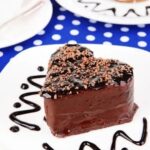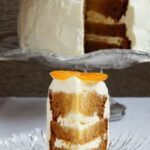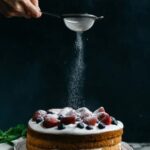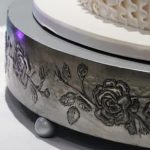Are you wondering how to attach fondant decorations to a buttercream cake? Properly attaching fondant decorations is crucial for a visually stunning and structurally sound cake. In this blog post, we will guide you through the process of preparing the cake, making and handling fondant decorations, and step-by-step instructions on how to attach them to create a beautifully decorated buttercream cake.
When it comes to creating an eye-catching cake, the proper attachment of fondant decorations can make all the difference. Whether you are a beginner or an experienced baker, having the right tools and techniques at your disposal is essential in achieving professional-looking results.
In the following sections, we will detail the tools and materials needed, provide step-by-step instructions on preparing the buttercream cake for decoration, explain how to make and handle fondant decorations, and offer troubleshooting tips for common issues that may arise during the process. Additionally, we will explore finishing touches, tips for storage and presentation, and stress the importance of proper technique in ensuring a successful outcome.
So let’s dive in and learn how to elevate your buttercream cakes with beautiful fondant decorations.
Tools and Materials Needed
When it comes to successfully attaching fondant decorations to a buttercream cake, having the right tools and materials is essential. This section will detail the specific items needed to ensure that your fondant decorations stay securely in place and look beautiful on your cake.
Fondant
The most obvious item you’ll need is fondant itself. Whether you choose to make your own or purchase pre-made fondant, it’s important to have enough to create all of the decorations you envision for your cake. Different colors may also be necessary depending on your design.
Buttercream Icing
In addition to fondant, you’ll need a good supply of buttercream icing. This will act as the adhesive for attaching the fondant decorations to your cake. Ensure that your icing is at the right consistency for spreading and smoothing onto the cake.
Cake Turntable
A cake turntable is an incredibly useful tool for applying both buttercream icing and fondant decorations. It allows for easy access to all sides of the cake, making it much simpler to achieve a smooth and even finish.
Rolling Pin and Cornstarch/Powdered Sugar
When working with fondant, a rolling pin is necessary for rolling out the dough to the desired thickness. Dusting cornstarch or powdered sugar on your work surface will prevent sticking and make handling easier.
Other Tools
Additional items such as a sharp knife or pizza cutter for cutting shapes, small paintbrushes for applying water or edible glue onto decorations, and a fondant smoother for ensuring clean edges are also helpful when attaching fondant decorations to a buttercream cake.
By having these tools and materials on hand, you can set yourself up for success when it comes to creating stunning fondant decorations on a buttercream cake. In the next section, we will delve into how these items are used in the process of preparing and decorating your cake.
Preparing the Buttercream Cake
Before attaching fondant decorations to a buttercream cake, it is essential to properly prepare the cake to ensure a smooth and clean base for the decorations. The first step in preparing the buttercream cake is to ensure that the frosting is smooth and free of any lumps or imperfections. Using a cake turntable can be incredibly helpful in achieving an even and consistent layer of buttercream on the cake.
Once the buttercream icing is applied, it is important to use a frosting smoother or offset spatula to smooth out any uneven areas or air bubbles in the icing. This will create a stable and even surface for attaching fondant decorations later on. It’s also crucial to chill the cake after applying the buttercream, as this helps to firm up the icing and make it easier to work with when attaching fondant decorations.
After these steps are complete, you should have a perfectly prepared buttercream cake ready for fondant decorations.
Table: Tools and Materials Needed for Preparing Buttercream Cake
| Tools | Materials |
|---|---|
| Cake turntable | Fondant |
| Frosting smoother or offset spatula | Buttercream icing |
| Piping bags or tips (optional) | Cake leveler (optional) |
Making and Handling Fondant Decorations
To make fondant decorations, start by kneading the fondant until it becomes soft and pliable. This will make it easier to work with and shape into the desired design. For shaping, use cookie cutters, sculpting tools, or even household items like straws for small circles. When adding color to your fondant decorations, remember that gel food coloring works best as it won’t alter the consistency of the fondant.
Once your decorations are shaped and colored, allow them to dry completely before attaching them to the buttercream cake. Drying time will vary depending on the size and thickness of your decorations, but allowing at least 24 hours is recommended. Placing them on a flat surface away from direct sunlight or heat will help prevent cracking or misshaping.
Creating stunning fondant decorations can truly elevate the appearance of a buttercream cake. Properly shaping, coloring, and drying these elements ensures that they are ready for attachment without compromising their integrity or appearance. By following these techniques closely, you can achieve professional-looking results on your homemade cakes.
| Fondant Decoration Techniques | Information |
|---|---|
| Kneading Fondant | Knead until soft and pliable for easier shaping. |
| Drying Time | Allow at least 24 hours for decorations to dry completely before attachment. |
| Coloring Tips | Gel food coloring works best for vibrant colors without altering consistency. |
Attaching Fondant Decorations
To attach fondant decorations to a buttercream cake, follow these step-by-step instructions for a successful outcome:
1. Prepare the Buttercream Base: Before attaching fondant decorations, ensure that the buttercream cake has been properly prepared. Use a cake turntable to help with the application and smoothing of buttercream icing, ensuring that the surface is clean and smooth for the fondant attachments.
2. Apply Fondant Adhesive: To securely attach fondant decorations to the buttercream cake, use a small brush or food-safe paintbrush to apply a thin layer of light corn syrup or piping gel to the back of each decoration. This will act as an adhesive and help the fondant stick to the buttercream surface.
3. Position and Secure Decorations: Carefully place the fondant decorations onto the buttercream cake, gently pressing them into place to ensure they adhere properly. Use your fingers or a smoother tool to carefully blend any edges or seams where the decorations meet the cake, creating a seamless look.
4. Smooth and Seal Edges: Once all fondant decorations are in place, use a small, clean artist’s brush lightly dipped in water to smooth out any rough edges or seams between the decorations and the cake. This will help seal the edges and create a polished finish.
By following these step-by-step instructions, you can successfully attach fondant decorations to a buttercream cake for a professional and visually appealing result that is sure to impress at any special occasion.
Troubleshooting
Attaching fondant decorations to a buttercream cake can sometimes present challenges, but with the right techniques and troubleshooting skills, these issues can be easily resolved. Here are some common issues that may arise when attaching fondant decorations to a buttercream cake and how to address them:
One of the most common issues when attaching fondant decorations to a buttercream cake is air bubbles forming underneath the fondant. This can happen when the fondant is not rolled out evenly or if it is not smoothed properly onto the cake. To fix this issue, carefully lift the affected areas of the fondant and use a small pin to gently poke a hole in the air bubble. Then, smooth out the fondant again to ensure a seamless finish.
Another frequent problem that may occur is fondant decorations sagging or losing their shape while on the cake. To prevent this from happening, make sure that your buttercream icing has formed a firm crust before attaching the fondant decorations. Additionally, consider adding tylose powder or CMC powder to your fondant mixture before shaping your decorations as this will help them hold their shape and structure better once attached to the cake.
Finally, cracking or tearing of fondant decorations during attachment can also be common, especially if they are too thin or if they have dried out too much before being placed on the cake. In this case, gently brush some water onto the back of the decoration before attaching it to the cake and smooth it into place. The moisture from the water will help rehydrate and reattach any cracked pieces, ensuring that your decorations stay intact.
By addressing these common issues and mistakes with these simple solutions, you can ensure a successful outcome when attaching fondant decorations to your buttercream cakes for professional-looking results every time.
Finishing Touches
When it comes to adding the finishing touches to a buttercream cake after attaching fondant decorations, there are several options to consider. These details can enhance the overall look of the cake and add a professional touch to your creation. Here are some ideas for adding those final embellishments:
- Borders: Adding a border around the base of the cake or around the edges of each layer can help frame the fondant decorations and give the cake a polished look.
- Piping: Using piped designs or patterns with buttercream icing can add texture and visual interest to the cake. This could include intricate designs, simple dots, or even writing a message on the cake.
- Edible Glitter: Sprinkling edible glitter or shimmer dust over the cake can create a beautiful, sparkly effect that catches the light and adds glamour to your design.
These finishing touches should be added after attaching the fondant decorations to ensure that they remain intact and undisturbed. Depending on your design, you may choose to utilize one or more of these techniques to achieve your desired look for the cake.
Remember that these additional decorations should complement and enhance the fondant decorations rather than detract from them. Less is often more when it comes to finishing touches, so consider your design as a whole before adding these final details. With careful consideration and precision, these elements can take your buttercream cake to the next level.
Tips for Storage and Presentation
Storing the Cake
Once you have successfully attached fondant decorations to your buttercream cake, it’s important to store it properly to maintain its quality and freshness. If the cake is not going to be served immediately, it should be stored in a cool, dry place away from direct sunlight or heat sources. It’s ideal to store the cake in a cake box or under a cake dome to protect it from dust and other contaminants.
If the weather is warm or humid, consider storing the cake in the refrigerator for added freshness. However, before refrigerating a fondant-decorated cake, it’s important to note that condensation can form on the fondant when it is removed from the fridge and exposed to warmer temperatures. To prevent this, allow the cake to come to room temperature while still covered before serving.
Presenting the Cake
The presentation of your cake can elevate its visual appeal and create a lasting impression. Consider adding additional decorative elements such as fresh flowers, edible pearls, or shimmer dust for an extra touch of elegance. If your cake features themed fondant decorations, consider incorporating complementary colors or designs into the overall presentation.
When displaying your buttercream cake with fondant decorations, make sure it is placed on a clean and sturdy surface. Use a cake stand or a decorative platter that complements the theme and style of your cake for a polished look. Additionally, paying attention to details such as lighting and background can enhance the overall presentation of your creation.
Tips for Professional Presentation
To ensure a professional finish when presenting your buttercream cake with fondant decorations, consider adding coordinating elements such as placemats or napkins that complement the color scheme of your creation. Simple yet impactful touches like these can contribute to an overall cohesive and appealing presentation.
Remember that proper storage and thoughtful presentation are essential components of showcasing your beautifully decorated buttercream cake with fondant decorations. By following these tips, you can ensure that your masterpiece not only looks stunning but also stays fresh until it’s time to enjoy it with friends and family.
Conclusion
In conclusion, properly attaching fondant decorations to a buttercream cake is essential for achieving a professional and polished look. As outlined in this blog post, the key to success lies in using the right tools and materials, preparing the cake and fondant decorations with precision, and following specific techniques for attachment. The process may seem daunting at first, but with the right guidance and practice, anyone can master the art of decorating a buttercream cake with fondant accents.
One of the most crucial aspects of this process is ensuring that the buttercream cake is prepared correctly. Smoothing the icing and creating a clean base for the fondant decorations will ultimately impact the outcome of the final product. Additionally, handling fondant with care and attention to detail is also important. This includes shaping, coloring, and drying techniques to ensure that the decorations are ready for attachment.
Overall, successfully attaching fondant decorations to a buttercream cake requires patience, precision, and practice. By following the step-by-step instructions provided in this blog post and being mindful of common troubleshooting issues that may arise, readers can feel confident in their ability to achieve stunning results. So don’t be afraid to try out these techniques yourself – with dedication and practice, you’ll soon be creating beautifully decorated buttercream cakes that are sure to impress any audience.
Frequently Asked Questions
How Do You Get Fondant Decorations to Stick to Buttercream Icing?
To get fondant decorations to stick to buttercream icing, you can brush the back of the fondant with a small amount of water or edible glue before placing it onto the buttercream. This will help them adhere securely without sliding off.
Will Fondant Decorations Melt on Buttercream?
Fondant decorations should not melt on buttercream if they are kept in a cool, dry place. However, if the temperature is too warm, there is a possibility that the fondant could become soft and lose its shape. It’s best to avoid placing the cake in direct sunlight or in a warm environment for an extended period of time.
How Far in Advance Can I Put Fondant Decorations on a Buttercream Cake?
You can put fondant decorations on a buttercream cake up to 1-2 days in advance of serving. Placing them too far in advance may cause them to become soggy or lose their shape. Store the decorated cake in a cool, dry place and protect it from any sources of heat or moisture until it’s ready to be served.

Welcome to my blog about home and family. This blog is a place where I will share my thoughts, ideas, and experiences related to these important topics. I am a stay-at-home mom with two young children. I hope you enjoy reading it! and may find some helpful tips and ideas that will make your home and family life even better!





